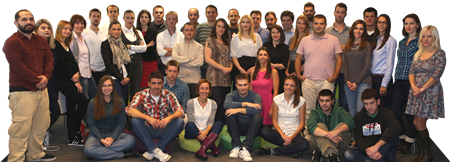Alexander Technique; Aleksandar Tehnika, praktični kurs
Stara cena |
2.995 din |
|
| Cena: |
2.546 din
(Predmet je prodat)
|
|
| Stanje: | Nekorišćen |
| Garancija: | Ne |
| Isporuka: | Pošta Lično preuzimanje |
| Plaćanje: | PostNet (pre slanja) Lično |
| Grad: |
Beograd-Zvezdara, Beograd-Zvezdara |
ISBN: Ostalo
Godina izdanja: 1998
Oblast: Alternativna medicina
Jezik: Engleski
Autor: Strani
Detalji o proizvodu:
Knjiga je nekorišćena-MINT stanje
Izdavač : Element; Ilustrovano izdanje (28. januar 1999.)
Jezik : engleski
Meki povez : 224 stranice
ISBN-10 : 1862042268
ISBN-13 : 978-1862042261
Dimenzije : 20,32 k 1,91 k 30,48 cm
Težina: 952 gr.
Šta je Aleksandrova tehnika?
Tehnika Aleksandra je metod samopomoći. Njegova svrha je da pomogne ljudima da izbegnu stvari koje su štetne za njihovo opšte blagostanje. Metoda je jedinstvena jer, za razliku od većine sistema koji savetuju ljude šta da rade ili kako da rade, ova uči šta ne treba da rade i kako to sprečiti. Dakle, Tehnika zahteva, pre svega, praktičnu demonstraciju, prenošenje iskustva o tome koje su akcije pogrešne; a zatim i jasna uputstva kako se mogu izbeći.
English translation:
What is the Alexander Technique?
The Alexander Technique is a method of self-help. Its purpose is to help people to avoid doing things that are harmful to their general wellbeing. The method is unique because, unlike most systems that advise people what to do or how to do it, this teaches what not to do and how to prevent it. Thus the Technique requires, first of all, a practical demonstration, conveying the experience of what actions are wrong; and then clear instruction as to how they can be avoided.
The Technique originated as long ago as 1894 from the experiences gained by Mr. F. Matthias Alexander concerning his use of voice, as an actor and performer of dramatic recitations. He had no scientific training in anatomy and physiology, but observation and experiment led him to acquire knowledge so that he was able to overcome the problems of speech and respiration that had beset him. When certain eminent scientists subsequently experienced his work for themselves, they asserted that it satisfied all the criteria of scientific method.
Why then is the Alexander Technique so difficult to describe in simple words? Why, on reading accounts of it, do literate and scientifically educated people often fail to grasp its significance?
On the one hand the concept of `not-to-do`, of `thou shalt not`, can evoke negative emotional responses which confuse the issue. People prefer to be advised what to do. They look for positive instruction. On the other hand, the scientific significance of what Alexander observed as he stood in front of a looking-glass can scarcely be appreciated by a reader without some technical knowledge of balance, movement and posture.
He established empirically that in posture and movement his neck must not be stiffened, but that his head should be allowed to adopt a certain preferred attitude in relation to his neck and body (described by him as `headforward-and-up`) and that this was consistent with a free, alert attitude or state of poise.
Recent scientific research concerning head orientation and posture in vertebrates indicates that there is a preferred head orientation which animals maintain through a variety of behaviours. It is associated with an alert posture and an extensive acrobatic capability. In living vertebrates it involves maintaining the semi-circular canals, or the lateral semicircular canal, (a part of the organ of balance or the vestibular apparatus), in an attitude approximately level with the horizon.
Research in the neurophysiology of balance, posture and locomotion is of comparatively recent origin, but so far as it has gone it tends to confirm Alexander`s empirical findings and should lead ultimately to an understanding and acceptance of his Technique.
1.) KUPAC SNOSI TROŠKOVE POŠTARINE!!! (vidi cenovnik u daljem tekstu)
2.) Plaćanje ISKLJUČIVO: 1. Lično ili 2. PostNet-om!!!
Cena poštarine je dole u tabeli.
Lično preuzimanje:
1. Konjarnik/Šumice (ugao Ustaničke i Vojislava Ilića) za kupovinu ispod 990 din
2. Za kupovinu
Predmet: 78023105











